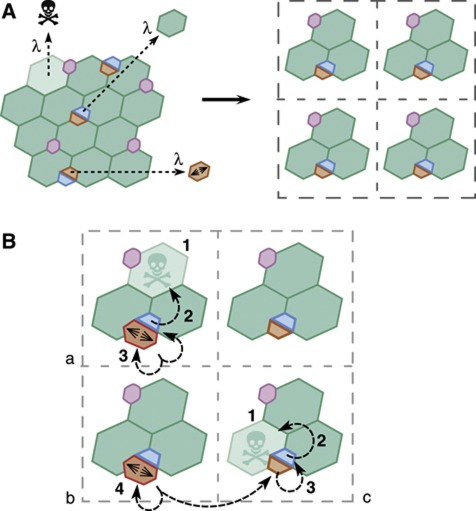Figure 5.
Quantitative model of tissue homeostasis. (A) The midgut epithelium is simplified as a square 2D lattice, each point containing two undifferentiated cells (by fraction, the ISC and EB population) and four mature, terminally differentiated cells (by fraction, three ECs and one EE cell). In homeostasis, the loss rate of mature terminally differentiated cells, λ, matches the differentiation rate of EB cells and the division rate of the ISCs. In a model of invariant asymmetric self-renewal, clones derived from differentiated cells will become progressively lost as the tissue turns over. Clones derived from ISCs will progressively expand to occupy the lineage domain/lattice point (see Figure 1D and Supplementary Figure S4A). (B) In the 2D lattice model, homeostasis takes place through a series of concatenated replacements. In domains (a) and (c), the loss of a mature terminally differentiated cell (1) triggers the differentiation of an EB (2). This EB loss, with probability 1–2r, is replaced through division of the ISC (3) in the same domain (a). Alternatively, with probability 2r, both undifferentiated cells within the domain (c) may commit to differentiation (3), which requires replacement to be fulfilled by the symmetrical duplication of an ISC (4) in a neighbouring domain (b).

